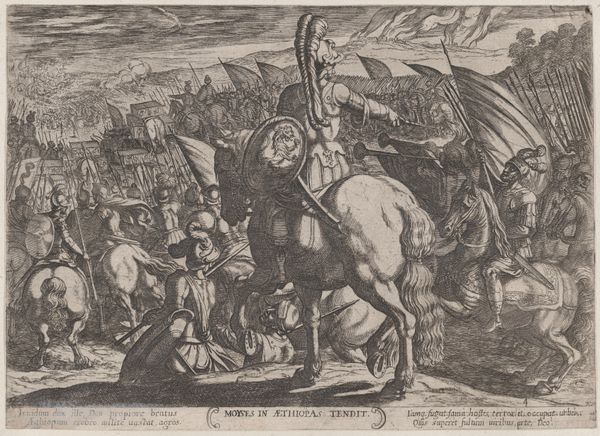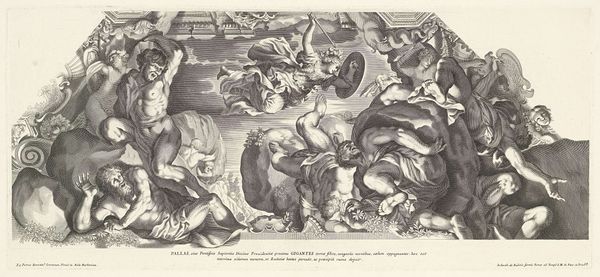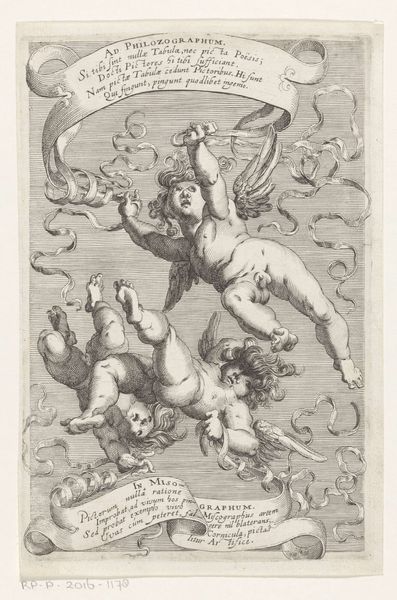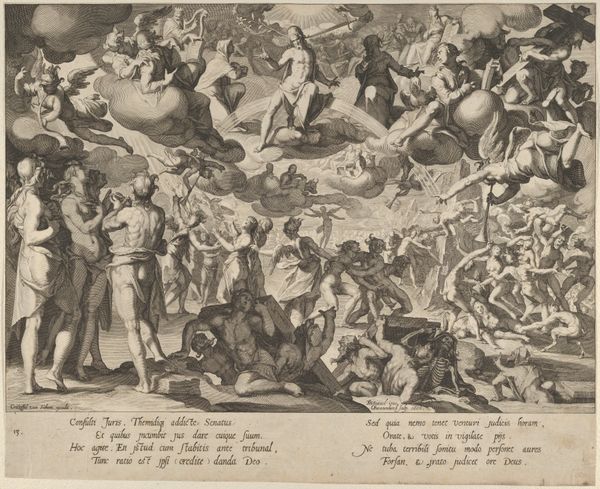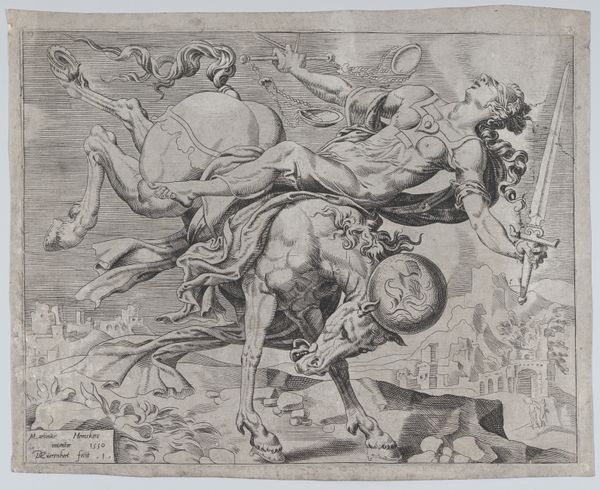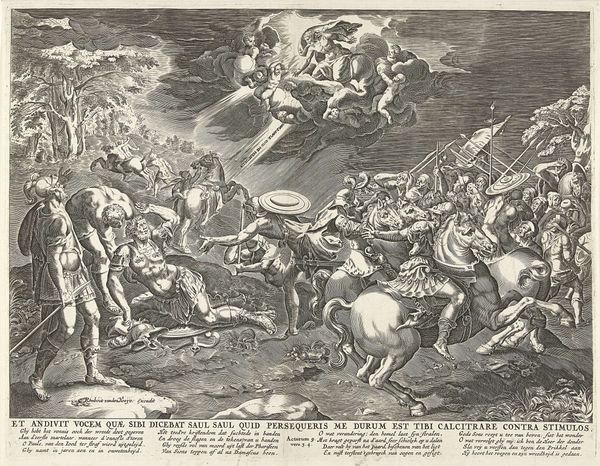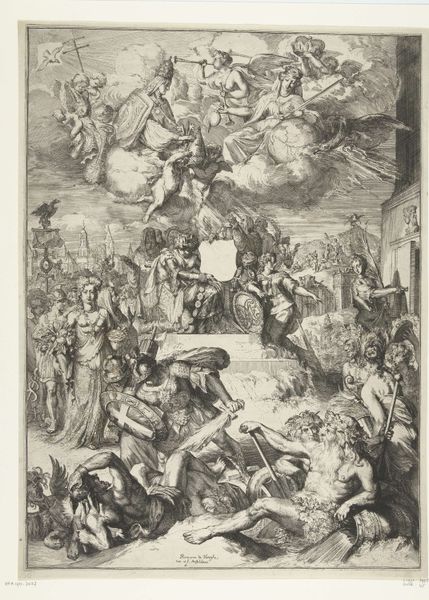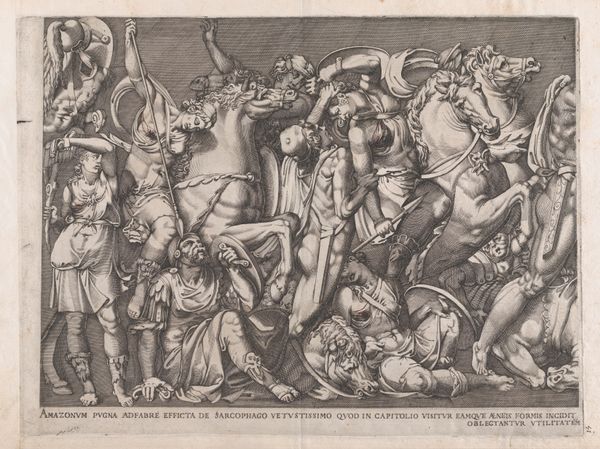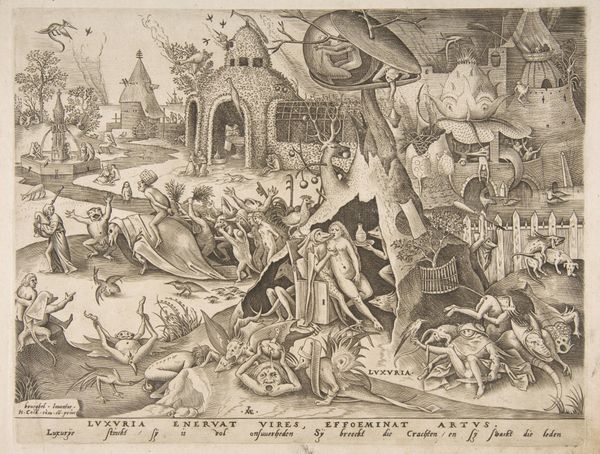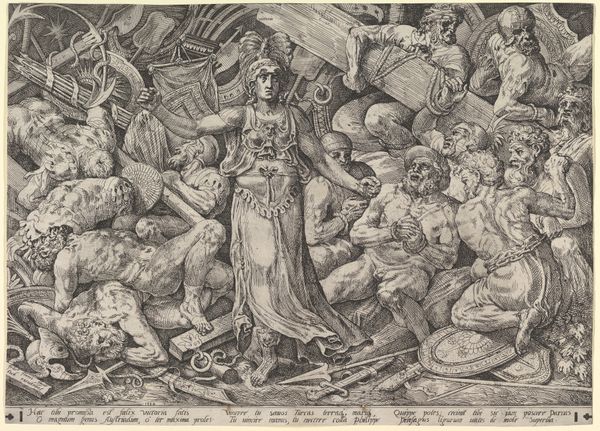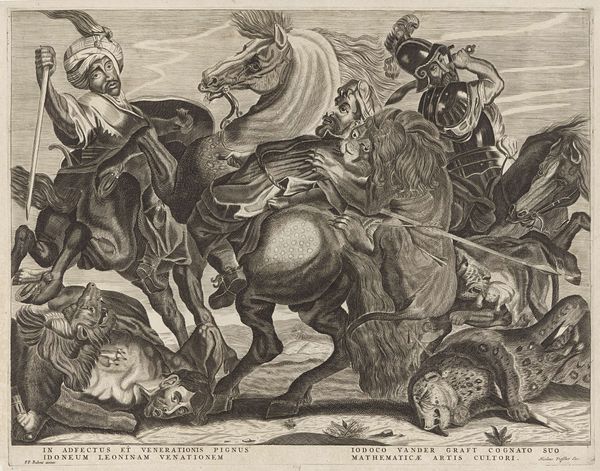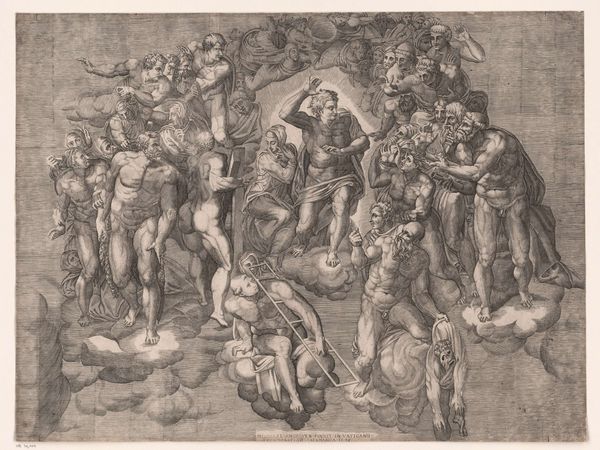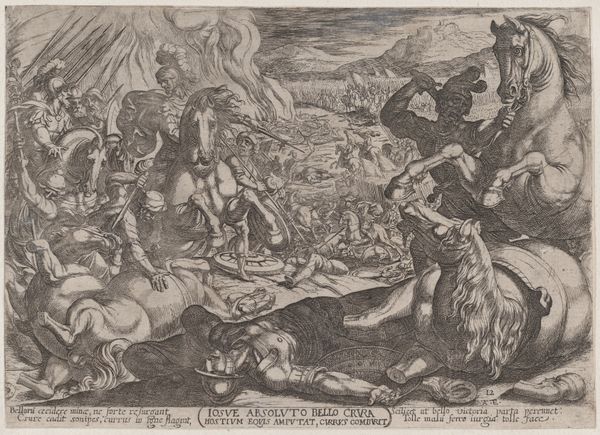
print, engraving
#
narrative-art
#
baroque
# print
#
caricature
#
caricature
#
pen-ink sketch
#
surrealism
#
portrait drawing
#
genre-painting
#
engraving
Dimensions: height 276 mm, width 374 mm
Copyright: Rijks Museum: Open Domain
Curator: This print, residing here at the Rijksmuseum, is entitled *Een vrouw die haar man vertrapt,* which translates to *A woman trampling her husband.* Created sometime between 1610 and 1663, it’s the work of Cornelis van Kittensteyn, rendered using engraving techniques. Editor: It strikes me as quite chaotic! A rather imposing woman dominates the scene, and there's a frenetic energy to the composition. What immediately jumps out is her rather gleeful expression contrasted with the visible distress of those around her. Curator: That gleeful expression, I think, hints at the satirical nature of the piece. We see a figure, presumably the husband, literally flattened beneath her feet, his possessions scattered around him, a potent symbol of reversed roles and the perceived dangers of female dominance in that era. The overturned jug likely symbolizes the loss of household stability. Editor: Precisely! The jug speaks to broken roles within the marriage but notice too, the detail of what appears to be children reacting—one clinging to the woman, the other hiding. This all adds to the emotional layers, doesn’t it? The image certainly taps into deep-seated anxieties regarding social order. It is so interesting how period details like her cap or the shape of those jugs tie the emotional context to a historical world that felt those specific social fears in ways very foreign to us. Curator: And consider the print medium itself. These images would have been widely circulated, making this commentary accessible to a broad audience, solidifying the visual language surrounding gender roles and power dynamics. Editor: Right. The distribution amplifies the message. Was this typical for Kittensteyn to focus on social satires and marital themes like this? Curator: Yes, Kittensteyn was known for these genre scenes and caricatures. He cleverly used recognizable tropes, turning ordinary life into biting social commentary. Notice how he emphasizes caricature elements by using rather strong contrast and highly exaggerated features in order to drive home the satirical social commentary. Editor: It’s a complex dance then, isn't it? Using common cultural anxieties to provoke, perhaps even reinforce, specific ideas. It gives you a stark glimpse into that period's concerns. Curator: A fascinating window, indeed. It makes one consider how societal anxieties translate into visual representations that leave a lasting mark across centuries.
Comments
No comments
Be the first to comment and join the conversation on the ultimate creative platform.
